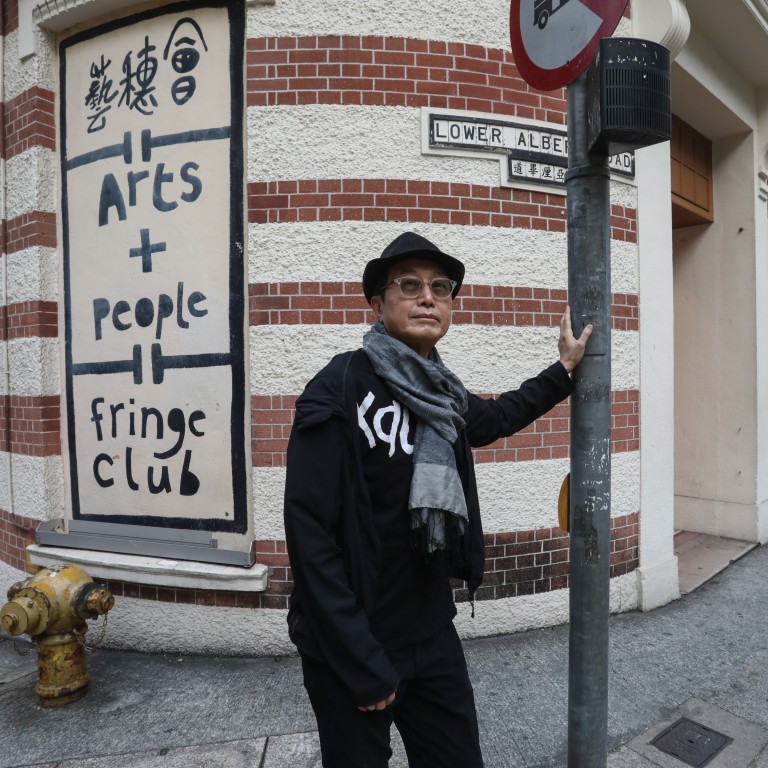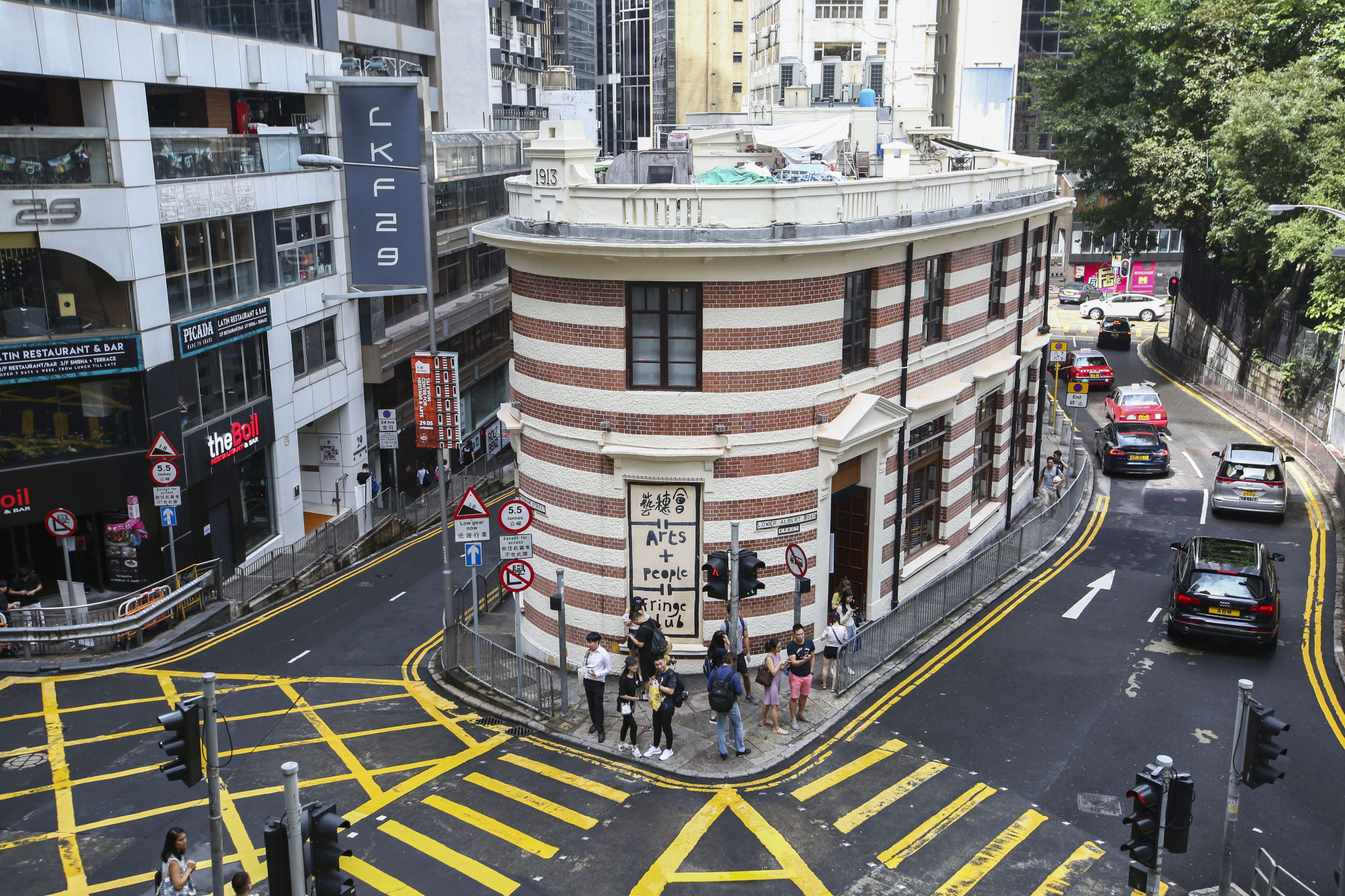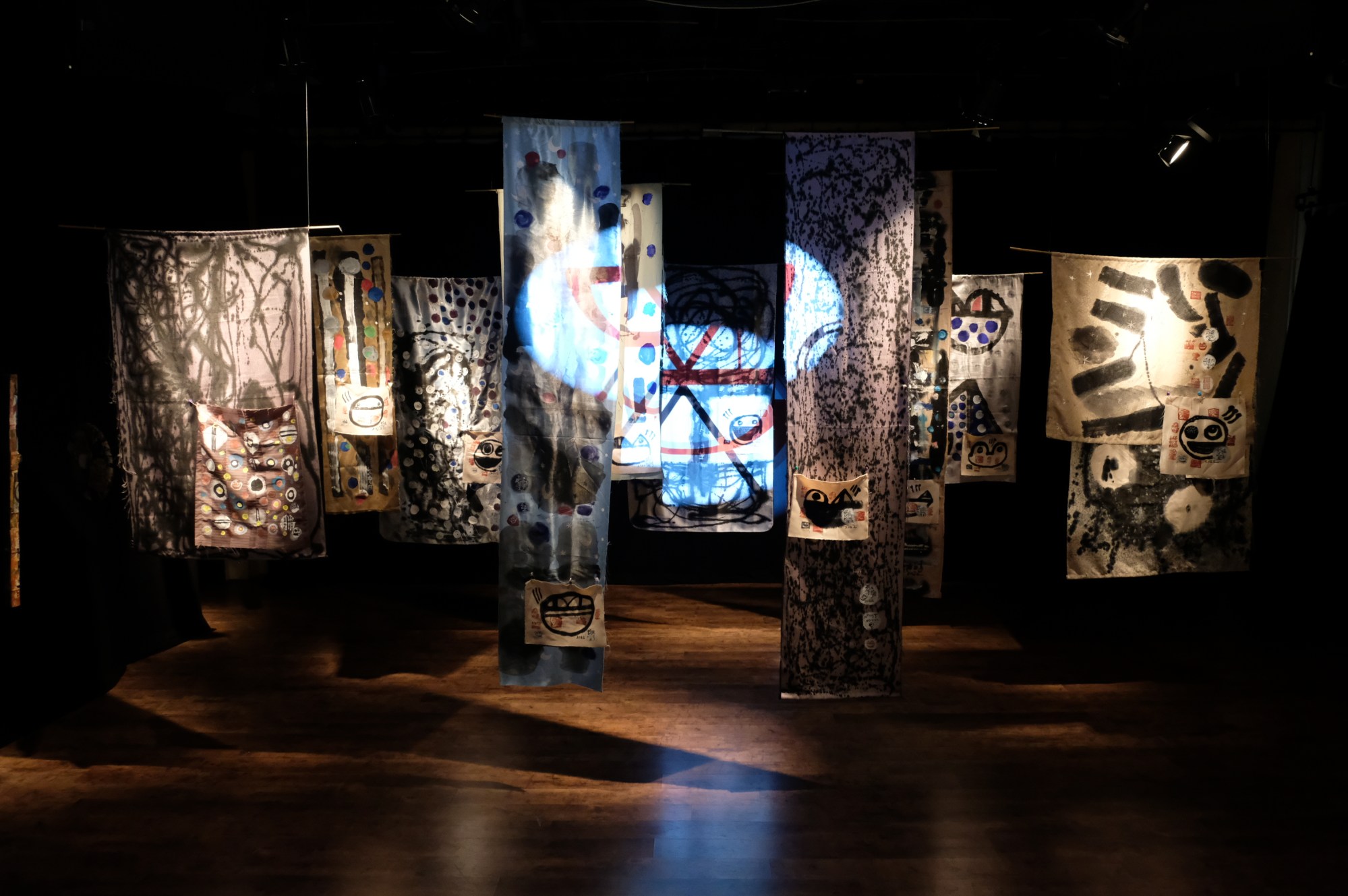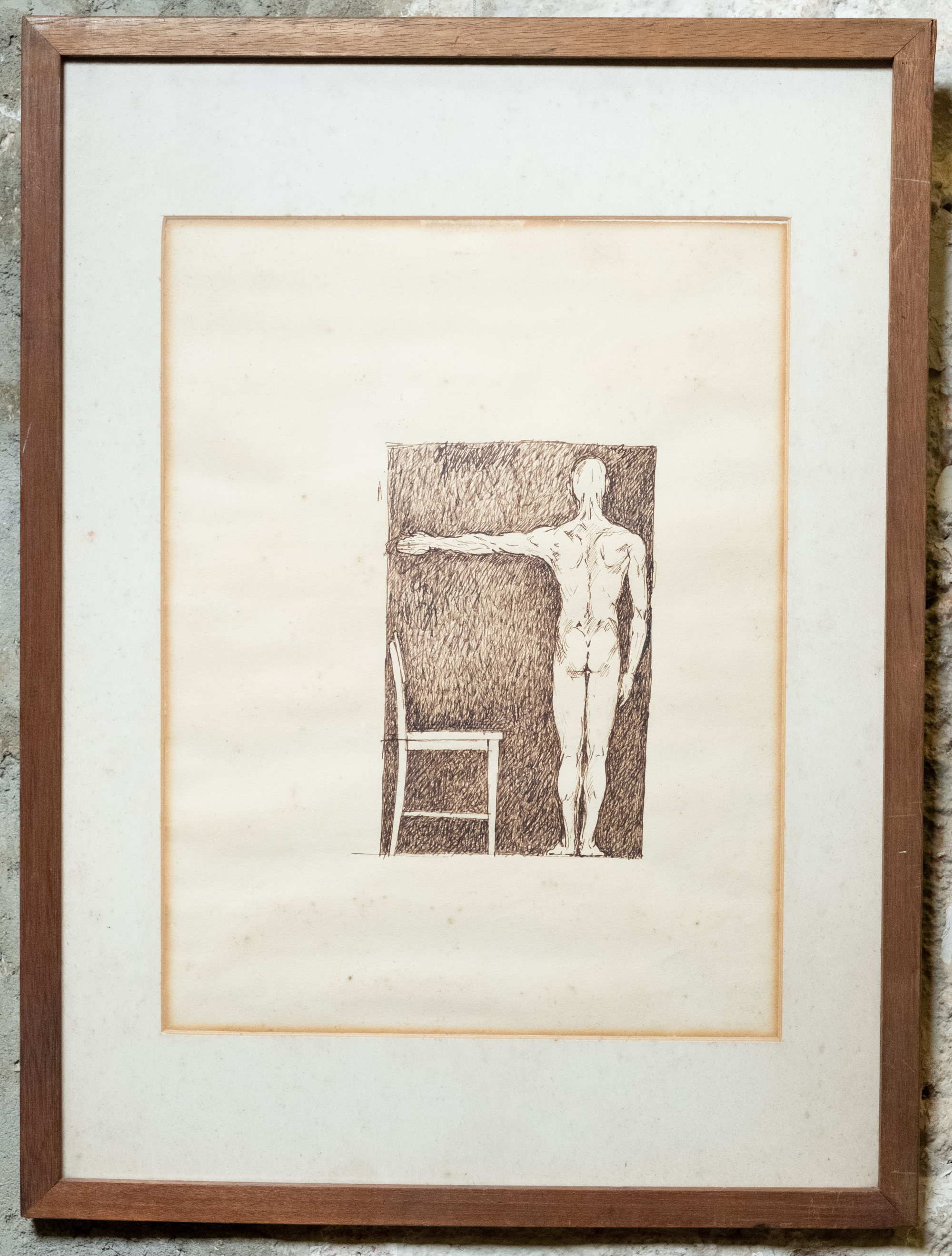
Hong Kong Fringe Club mounts what could be its farewell show, a retrospective of art exhibitions from the past four decades
- Will the Fringe Club’s lease in Central be renewed? With its fate up in the air after three years of disruption, it is staging its biggest art exhibition yet
- Frog King gets a floor to himself, and works by 65 other artists associated with the club since its opening in 1983 are featured in the ‘Be 40’ show
The fate of Hong Kong’s Fringe Club is up in the air.
The government first leased the 19th-century corner building it occupies in Lower Albert Road, Central, to the club at the time of its founding in 1983. The lease, which has already been extended for a year, will expire in March 2023, just two months after the end of the lease held by its long-term neighbour in the heritage building, the Foreign Correspondents’ Club of Hong Kong.

He is speaking next to an empty stage at The Dairy, where revellers used to sip cocktails and swing dance around the bar tables. While the club still has occasional performances, audiences must be fully masked and remain seated, numbers are restricted and no refreshments can be served.
Pandemic restrictions will be lifted one day, but that may come too late for the Fringe Club – once the bohemian heart of Hong Kong with its alternative festivals and large bar areas, including a popular rooftop lounge favoured by artists and their friends.

Chia says the club is preparing for the possibility that the lease will not be renewed, but that it would be difficult to find an alternative venue before vacating the only home it has ever known.
Meanwhile, the club’s few remaining staff have poured their energy into its largest ever art show, called the “Be 40 Mixed-Media Exhibition”. It is a major retrospective of 66 visual artists who have been featured at the venue.
“Be 40” has clearly been curated to serve as a swansong. It is the only exhibition at the club to use the entire three-storey space, with prints, photos and paintings lining every wall, from the cafe in the basement up the narrow staircases to the Cantonese restaurant on the top floor.

A dedicated exhibition website, hkfringe40.com, includes old photos and testimonies by the artists.
C Ting Chan, the exhibition’s main curator, likens the building to a “big old house” and says the show is “an opportunity to reconnect with our artists and to preserve our memories”.
The show’s main image, which she designed, shows a giant ocean wave cresting over the Fringe Club, in a none-too-subtle reference to the institution’s uncertain future.
“The Fringe is facing a tsunami,” she says. “But I also drew in a beam of light, like that of a lighthouse, and warm lights coming out of the windows, to show that there is still life here.”

At the top of the image is a kite, a large bird often seen soaring over Hong Kong’s harbour. “The kite represents our spirit,” she said. “Even if the wave crashes down on us, our spirit will survive.”
The earliest works in the “Be 40s” show are from 1983, the year the club occupied the building. A shadowy photo by Osbert Lam captures a performance lit by lanterns and candlelight – the premises had not yet been wired for electricity.

The show also includes nude sketches by Antonio Mak which were used for some of the Fringe Club’s first publicity materials.
Other pieces reflect daily life in Hong Kong since the 1980s. Emily Law’s ink works depict mundane items such as takeaway food containers. Meanwhile, Peggy Chan’s Responsibility includes a yellow hard hat decorated with flowers and wildlife.
Other stand-out works are Coral by Agnes Pang, who crafts collages out of discarded materials such as colourful styrofoam packaging. A 2002 painting by Tsang Chui-mei depicts the Fringe Club in happier times, set against a bright blue sea and a golden pathway.

Shan Luk, one of the artists featured, said many of her friends had been going to the Fringe Club since they were teenagers. “There is so much history and so many connections here,” she said.
Luk’s contribution to “Be 40” is a porcelain broken heart, stitched back together with bronze rivets using an ancient Chinese technique for fixing ceramics. She created it after enduring medical procedures.
“I was told to use anti-scarring cream after my surgery, but I didn’t want to. I thought, ‘why should I hide my scars, my history’?”
“Be 40 Mixed-Media Exhibition”, Hong Kong Fringe Club, 2 Lower Albert Road, Central, Mon-Sat, 11am-7pm. Until June 30. Online exhibit at www.hkfringe40.com.
